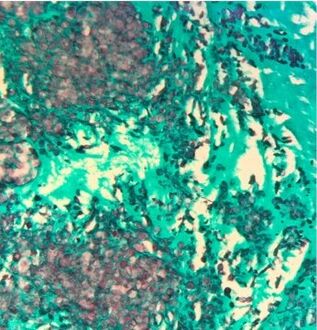Candida lusitaniae
| Candida lusitaniae | |
|---|---|
| Scientific classification | |
| Domain: | Eukaryota |
| Kingdom: | Fungi |
| Division: | Ascomycota |
| Class: | Saccharomycetes |
| Order: | Saccharomycetales |
| Family: | Saccharomycetaceae |
| Genus: | Candida |
| Species: | C. lusitaniae
|
| Binomial name | |
| Candida lusitaniae Uden & Carmo Souza
| |
| Synonyms | |
|
Clavispora lusitaniae | |
Candida lusitaniae is a species of yeast in the genus Candida.
Candida lusitaniae was first identified as a human pathogen in 1979.[1]
Candida lusitaniae was initially described as a rare cause of fungemia, with fewer than 30 cases reported between 1979 and 1990. However, there has been a marked increase in the number of recognized cases of candidemia due to this organism in the last two decades. Bone marrow transplantation and high-dose cytoreductive chemotherapy have both been identified as risk factors for infections with this organism.[2] These patients are often neutropenic for extended periods of time, leaving them susceptible to bacterial and fungal infections, including Candidal infections. Some investigators have theorized that the widespread use of Amphotericin B empiric antifungal therapy selects for infections with Candida lusitaniae.[3]
-
Gomori methenamine silver stain highlights numerous budding yeast and occasional pseudohyphal forms in mitral valve corresponding to C. lusitaniae recovered from culture
-
Scanning electron microscopy (SEM) images of C. lusitaniae on filament-inducing media. Cells grown on V8 (pH = 7) media for 7 days at 37°C were processed for SEM, and imaged (see Materials and Methods). Scale bars for upper panel (1000x) and lower panel (5000x) images represent 10 µm and 2 µm, respectively. WT (ATCC42720), cnb1 mutant (YC198), and crz1 mutant (YC187)
References
- ↑ Pappagianis D, Collins MS, Hector R, Remington J (1979). "Development of resistance to amphotericin B in Candida lusitaniae infecting a human". Antimicrob. Agents Chemother. 16 (2): 123–6. doi:10.1128/aac.16.2.123. PMC 352808. PMID 290351.
- ↑ Wingard JR (1995). "Importance of Candida species other than C. albicans as pathogens in oncology patients". Clin. Infect. Dis. 20 (1): 115–25. doi:10.1093/clinids/20.1.115. PMID 7727637.
- ↑ Krcmery V, Barnes AJ (2002). "Non-albicans Candida spp. causing fungaemia: pathogenicity and antifungal resistance". J. Hosp. Infect. 50 (4): 243–60. doi:10.1053/jhin.2001.1151. PMID 12014897.

